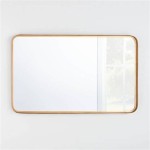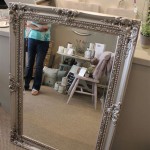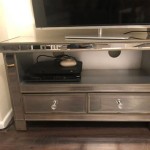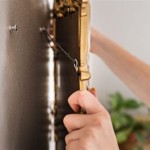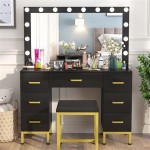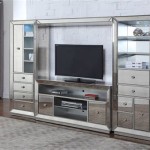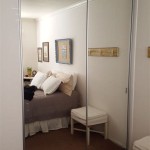How To Hang Mirror Tiles
Mirror tiles offer a versatile and affordable way to enhance a space, adding light, depth, and a touch of glamour. Whether used as a striking accent wall, a decorative backsplash, or a clever illusion of expanded space, mirror tiles can dramatically transform a room. Successfully installing these reflective beauties requires planning and precision. This guide provides a step-by-step approach to ensure a flawless and long-lasting mirror tile installation.
Preparing the Surface
Proper surface preparation is crucial for successful adhesion and prevents future issues. The surface must be clean, dry, and smooth. Begin by cleaning the area thoroughly with a suitable cleaner to remove any dust, grease, or debris. For painted surfaces, lightly sanding can improve adhesion. Any imperfections, such as cracks or holes, should be filled and sanded smooth. For particularly glossy surfaces, applying a primer designed for smooth surfaces can further enhance adhesion.
Planning the Layout
Before applying any adhesive, a well-planned layout is essential. Dry-fitting the mirror tiles allows for precise placement and helps avoid uneven spacing or awkward cuts. Start by finding the center point of the area to be covered and work outward. Consider the tile size and the desired pattern. Using spacers ensures consistent gaps between tiles for a professional finish. Mark the layout lightly on the wall with a pencil for guidance during the installation process.
Choosing the Right Adhesive
Selecting the appropriate adhesive is crucial for the longevity and stability of the mirror tile installation. Consider the size and weight of the tiles, as well as the surface material. Common adhesive options include mirror mastic, construction adhesive, and double-sided mounting tape. Mirror mastic provides a strong bond and is specifically designed for mirrors. Construction adhesive offers versatility and excellent holding power. Double-sided mounting tape is a convenient option for smaller tiles on smooth surfaces. Always follow the manufacturer's instructions for application and drying times.
Applying the Adhesive
Once the layout is finalized and the adhesive is selected, careful application is key. For mastic or construction adhesive, apply a generous amount to the back of each tile, ensuring even coverage. Avoid applying adhesive too close to the edges, as this can cause it to squeeze out and create a mess. For double-sided mounting tape, apply strips to the back of the tile, following the manufacturer’s instructions. Press each tile firmly onto the wall, following the marked layout and using spacers to maintain consistent gaps. Wipe away any excess adhesive immediately with a damp cloth.
Cutting Mirror Tiles
Inevitably, some tiles will require cutting to fit around edges or obstacles. Specialized tools, such as a glass cutter or tile nipper, are recommended for clean and accurate cuts. Score the mirror tile along the desired cutting line with a glass cutter, then use tile nippers to carefully break the tile along the score line. Always wear safety glasses and gloves when cutting mirror tiles to protect against sharp edges and flying shards.
Finishing Touches
After the adhesive has fully cured, according to the manufacturer's instructions, the final step is to apply grout or sealant to the gaps between the tiles. This creates a seamless and finished look, while also protecting the edges of the tiles and preventing moisture from seeping behind them. Choose a grout or sealant that is specifically designed for use with mirrors. Apply carefully using a grout float or caulking gun, ensuring even coverage and removing any excess. Allow the grout or sealant to dry completely before cleaning the tiles with a glass cleaner.
Safety Precautions
Working with mirror tiles involves potential hazards. Always prioritize safety by wearing appropriate protective gear, including safety glasses and gloves. Handle mirror tiles with care, as broken edges can be extremely sharp. Dispose of broken tiles properly, wrapping them in thick paper or cardboard to prevent injuries. Ensure adequate ventilation when working with adhesives and sealants. If working in a confined space, consider wearing a respirator to avoid inhaling fumes. Follow all manufacturer safety recommendations for adhesives, sealants, and cutting tools.

How To Hang Mirrors On Tile 3 Ways A Bonus The Palette Muse

How To Hang Mirrors On Tile 3 Ways A Bonus The Palette Muse

How To Hang A Mirror On Tile Wall Remington Avenue

How To Hang Mirrors On Tile 3 Ways A Bonus The Palette Muse

How To Install A Mirrored Tile Backsplash

How To Hang A Bathroom Mirror Over Tile Wainscoting Mimzy Company

How To Hang A Mirror On Tiles New Zealand Handyman

How To Install A Mirrored Tile Backsplash

How To Hang A Bathroom Mirror Over Tile Wainscoting Mimzy Company

How To Drill Into Tile Hang Things Maison De Pax

